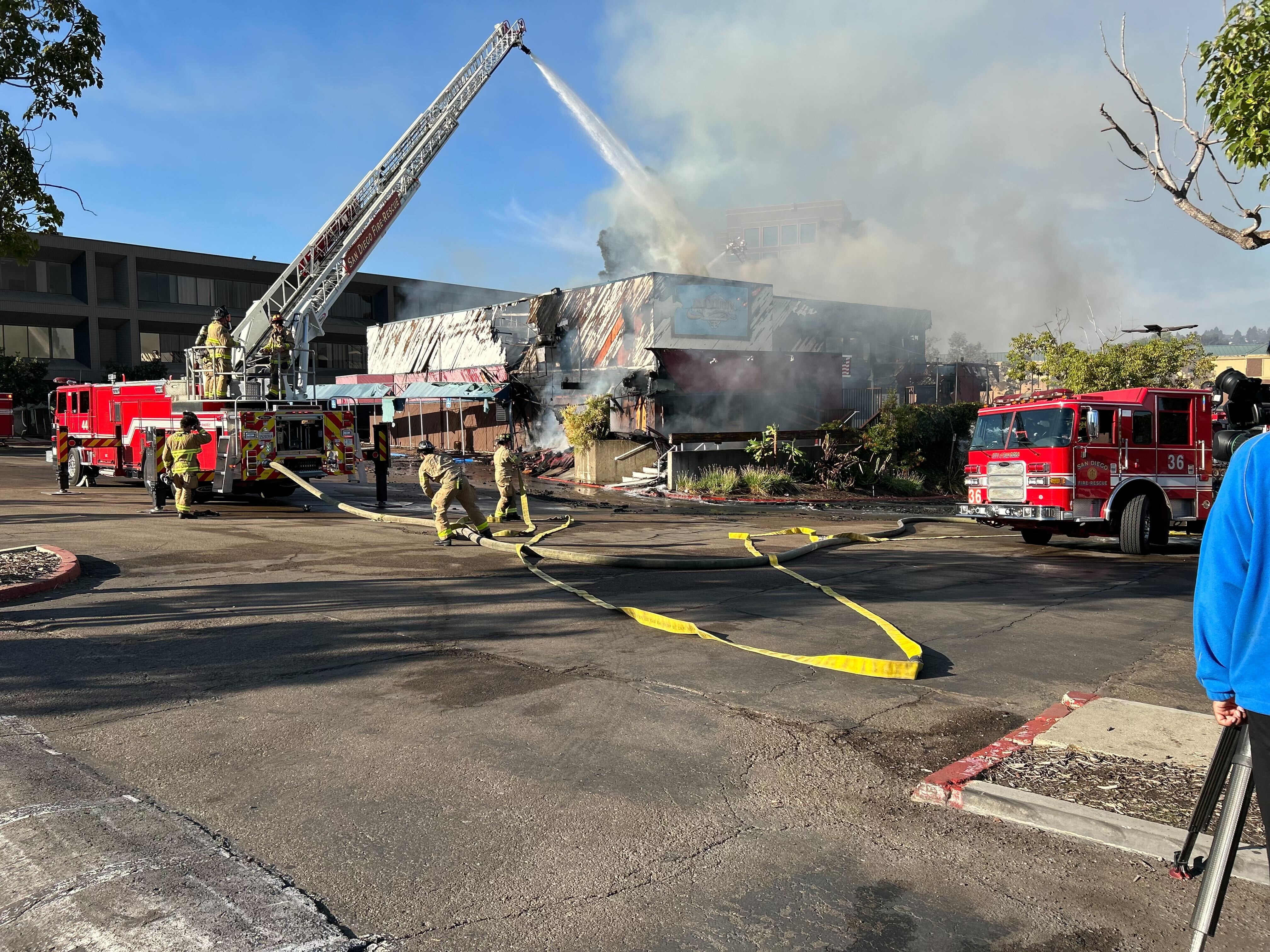San Diego's shipyard industry and community activists in Barrio Logan are on collision course, gearing up for another political showdown over land-use changes that waterfront industrial interests say would jeopardize their businesses and thousands of jobs.
The confrontation involves a community plan update recently approved on a 5-4 City Council vote, later challenged by maritime interests in a referendum petition drive that could force that decision onto the ballot -- unless the Council backs down Tuesday afternoon.
"I put my trust in voters to see this referendum process for what it is,” says Councilman David Alvarez, “a greedy attempt to keep the status quo at the expense of hard-working residents."
Alvarez, who grew up in Barrio Logan and has lived much of his life there, spoke to news media crews Monday in front of a house on Newton Avenue that’s sandwiched between two industrial properties.
Along with Barrio residents, environmentalists, and shipyard union workers, Alvarez argued that zoning changes to increase separation between the two land uses will not affect maritime builders and their suppliers.
"Every single one of the existing businesses can continue to exist under the plan, and they can expand up to 20 percent," Alvarez said. "Not one job will be lost. Not one business will be forced to relocate. And this plan is a true compromise in every sense of the word."
Said Hector Villegas -- the owner of the Newton Avenue home, in a neighborhood filled with machine shops: "I just hope that the rest of San Diego understands that things are not good here with the environment -- and there's a lot of noise with that, too."
While Villegas believes that industrial pollution is the cause of his daughter’s asthma, shipyard interests say zoning changes to buffer five city blocks in the Barrio eventually would hamper 24/7 maritime enterprises that have a $14 billion annual economic impact and 46,000 employees.
"There's lights, there's noise, okay?” says Derry Pence, president of the Port of San Diego Ship Repair Assn. “And if they start to curtail our operations by saying 'You have to shut down by 9 o'clock at night and you can't start until 7 in the morning’, then that's going to make it more difficult to do our job."
Local
The Council already has seen emotional presentations at previous meetings – and been targeted with a successful referendum petition-gathering effort that was accused of being dishonest, but upheld by a judge.
Shipyard workers have risen in protest of the community plan.
But the organized labor leader, who represents 80 percent of them, says they were misled for a long time, and now they've learned differently.
"They will also support this,” Shipyard Workers Union President Robert Godinez told reporters Monday, “because it's protecting their job and it's protecting the neighborhood -- that many of us actually live in."
The showdown is another campaign bone of contention between Alvarez and Council colleague Kevin Faulconer in their runoff race for mayor.
On Monday, Faulconer pushed back against his rival’s remarks, in an interview with NBC 7.
"To change the process that prevents these suppliers from locating there by right, putting them into a conditional use process, making it political -- that's wrong for the city of San Diego,” Faulconer said.
“The right decision would be to rescind this plan, go back and work on it, make some of these changes, compromise, and bring it forward -- not put it out to a costly ballot election. That would be the wrong choice."
If the plan is re-affirmed Tuesday by a Council majority, the City Charter requires that the referendum be placed on the June 3 citywide primary election ballot.
Should voters ultimately reject the plan, there would have to be substantial changes before it could be reintroduced earlier than a year later.



